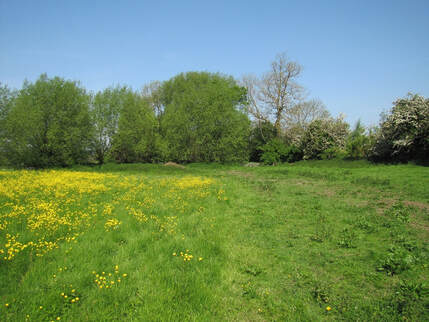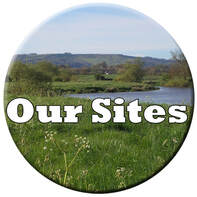Gore Meadows
The name Gore Meadows refers to the shape of the fields and is derived from the old English "gora" meaning a small, wedge-shaped piece of land. Gore Meadows consists of two floodplain meadows; Great Gore which has a good example of a floodplain meadow plant community (known as MG4) and Little Gore which is developing well as a wildflower meadow following years of horse grazing and agricultural improvement.
|
Little Gore lies flat from the centre south to Oxton Ditch and rises from the centre northwards. The slope has characteristics of unmanaged pasture dominated by Cock’s-foot and False Oat-grass with Hogweed and Cow-parsley common. Dock species are also locally abundant. At the East end Lady’s Bedstraw is frequent but it is swamped by the taller rank grasses. We are working to reduce this coarse vegetation in favour of finer grasses and wildflowers. The lower, flat section is more floristically rich where Knapweed, Great Burnet, Lady’s Bedstraw and Meadow Vetchling are all present and Meadow Buttercup is common.
|
The site floods most winters and occasionally in summer months leaving a tide-line of debris at the intersection between the flat area and the slope in Little Gore. This debris consists mostly of cut vegetation from surrounding fields and needs to be removed annually.
The unmanaged rank vegetation continues inside the gate of Great Gore but most of this meadow is beautiful in summer with frequent Black Knapweed, Great Burnet and Meadowsweet. Meadowsweet becomes dominant in the damper ground towards the ditch. This meadow could provide a seed source (green-hay) for Little Gore and nearby Mike’s Meadow to increase the floristic diversity in these and other meadows. Gore meadows are now managed as traditional floodplain hay meadows with the hay being cropped in July, followed by aftermath grazing with sheep. Sheep also graze the rough vegetation in early spring to reduce the competition from the tall herbs which will lead to an increase of more typical meadow flowers over time.
|
An Otter-holt was constructed by volunteers adjacent to the Oxton Ditch in Great Gore as sightings of this elusive animal have increased on the Avon in recent years. Harvest Mice nests have been found here and Barn Owls are known to hunt over the meadows in search of small mammals. In summer the once common sound of Cuckoos calling can still be heard. River dragonflies including Scarce Chaser, White-legged Damselfly and Banded Demoiselle are attracted to the meadows to hunt for smaller insects.
|







